E-commerce Analytics Tools:
Product Owner's Guide for 2023
E-commerce Analytics Tools:
Product Owner's Guide for 2023
Success is completely measured by data. You can set goals, milestones, and benchmarks, but without data, you’ll never know whether you’re hitting your KPIs, or killing it in sales. In this article, we’ll discuss the best e-commerce analytics tools, both separate and embedded. Let’s take a look at them and find the most beneficial for your web store.
Table of Contents
ToggleYou have probably thought about ways to improve your website. We’re sure you’ve even heard about all the various metrics that can help you measure how your e-store is doing. However, knowing how to choose the most appropriate analytical tool for your e-commerce may not always be instinctive. At Whidegroup, we’ve become closely familiar with the most popular and commonly used tools for tracking web metrics. Below, we offer a list of the ones we think are the best. Take a look, and perhaps you’ll find the answer to the online store analytics tool you’ve been wanting that will perfectly meet your current business needs!
Google Analytics is one of the most popular e-commerce analytics software solutions today, and is reportedly used by over 80% of all online marketers around the world. The freemium model of this web analytics service enables you to get highly-detailed reports and meaningful insights about your website and its visitors. With its convenient visualization feature, it makes it easier to digest all the data provided and make a sensible decision based on that information.
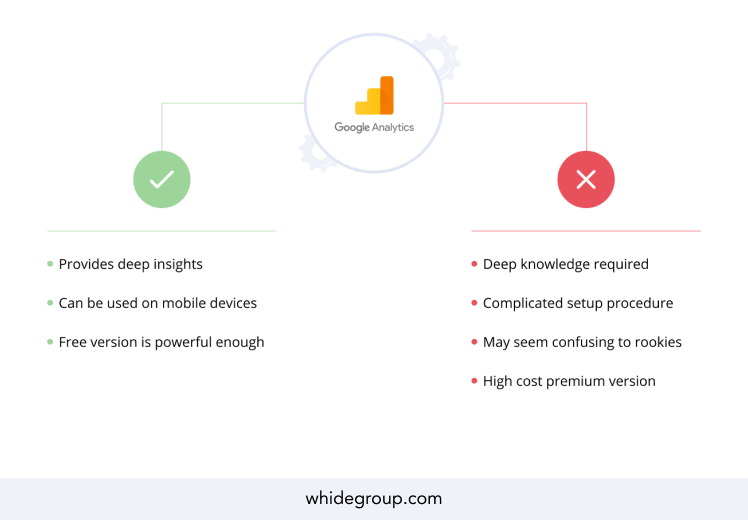
Highlights:
Clicky is often considered as the closest competitor of Google Analytics in terms of delivering a rich set of insights within a user-friendly interface. However, it should be noted that Clicky possesses fewer features than Google Analytics. On the one hand, this e-commerce analytics software is easily mastered by its users. On the other hand, fewer features leads to limitation in terms of all-around analysis, which makes Clicky less than suitable for advanced e-commerce analytics.
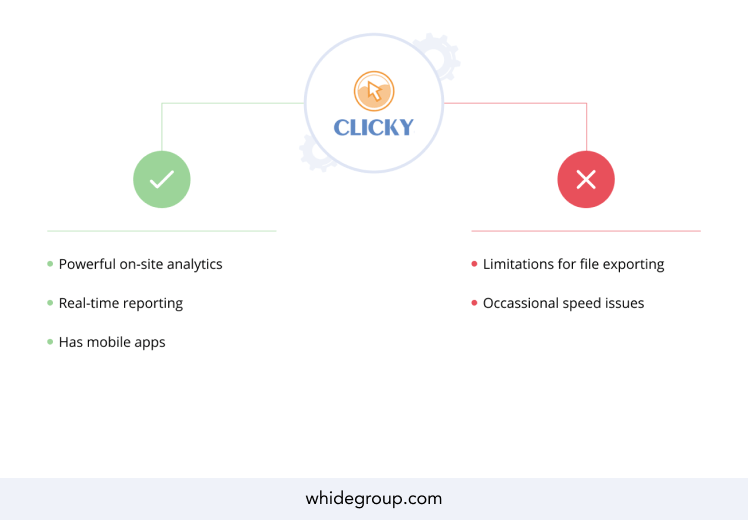
Highlights:
Crazy Egg is the best e-commerce analytics tool thanks to its simplicity and ease of installation. After installation, users discover a rich set of visualization features, such as the exclusive Crazy Egg signature tool – heatmap, scrollmap, and many more. As a result, business owners get access to all the needed data, enabling them to create their own exclusive data-driven approach and grow their business to reach new heights.
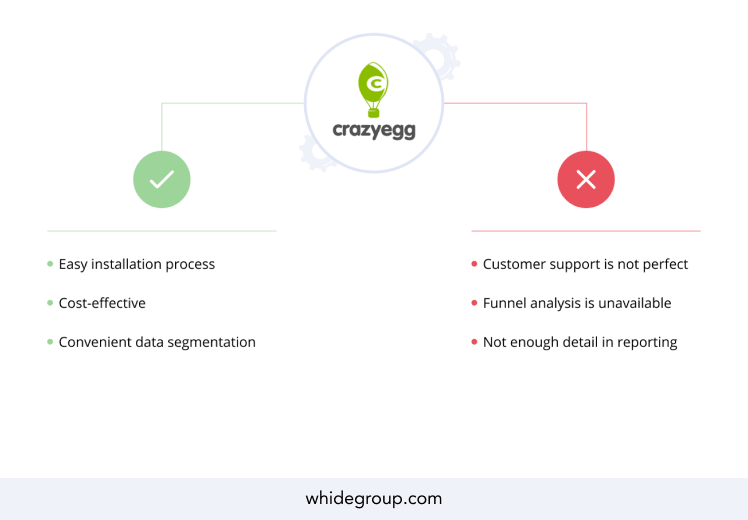
Highlights:
Another online store analytics tool on this list that was developed specifically for the e-commerce sphere is KISSmetrics. This tool is perfect when it comes to tracking events and e-commerce funnel analysis. In comparison with other popular e-commerce analytics tools, KISSmetrics provides the business owner with easier and faster ways to edit and tune funnels. Additionally, thanks to intuitive interface, this analytics tool for e-commerce is a real find for non-tech-savvy users taking their very first steps in e-commerce.
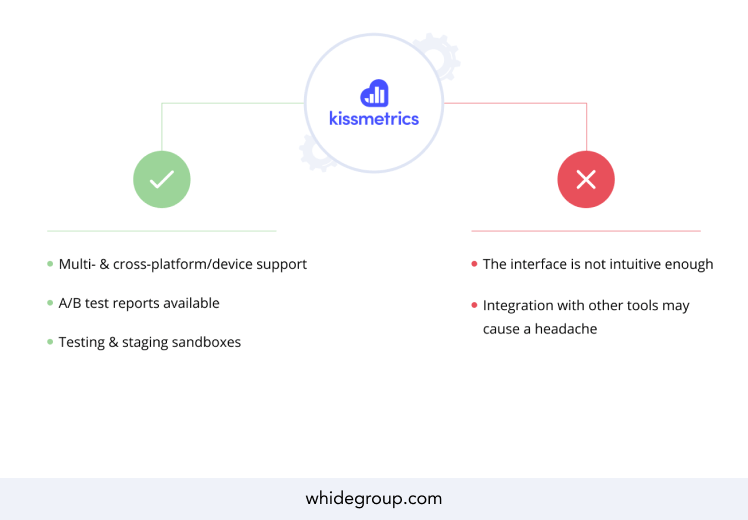
Highlights:
A list of the best website analytics tools isn’t complete without mentioning Adobe Experience Cloud (AEC). In fact, AEC is not a single analytical tool for e-commerce, but a collection of integrated online marketing, e-commerce reporting tools, and web analytics products created by Adobe Systems. This extremely complex digital marketing solution was developed with an intention to give really deep insights about marketing campaigns for gaining optimal marketing performance.
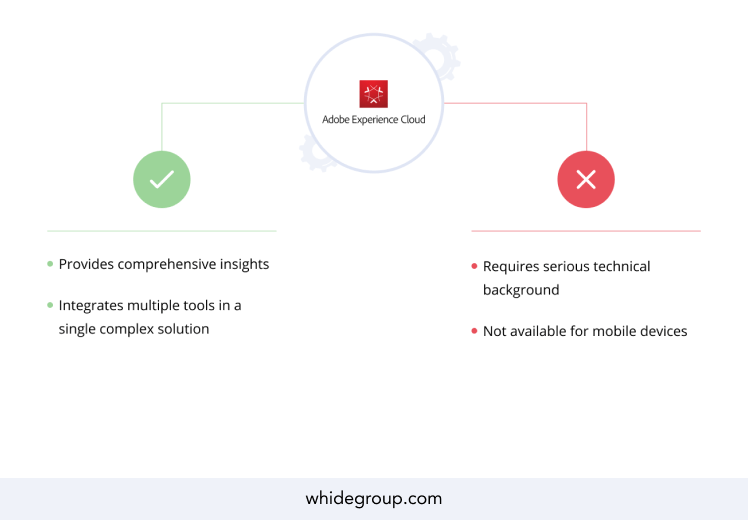
Highlights:
When compiling a list of the best website analytics tools, it’s impossible to pass by Hotjar. The top priority for this e-commerce analytics software is providing users with a fast and illustrative way to gain a comprehensive understanding of how to make changes to the online store in the most efficient manner possible. In addition to traditional features of online analytics tools, Hotjar provides visitor sessions recordings in video format, behavior logic prediction, and a conversion funnel.
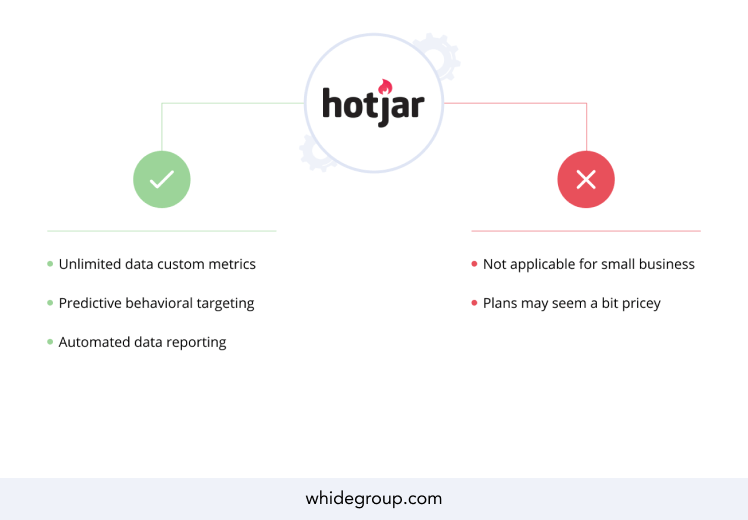
Highlights:
Once developed as a general analytics tool, Woopra was then enriched with many features. Currently, this solution is positioned as the best customer-centric analytics for e-commerce. Also widely used in data analysis in e-commerce, Woopra is particularly popular for usage among sales, service and marketing team members. The secret of its popularity is Woopra’s ability to aggregate leads and site visitor data from all consumer touchpoints – from website to live chat and email.
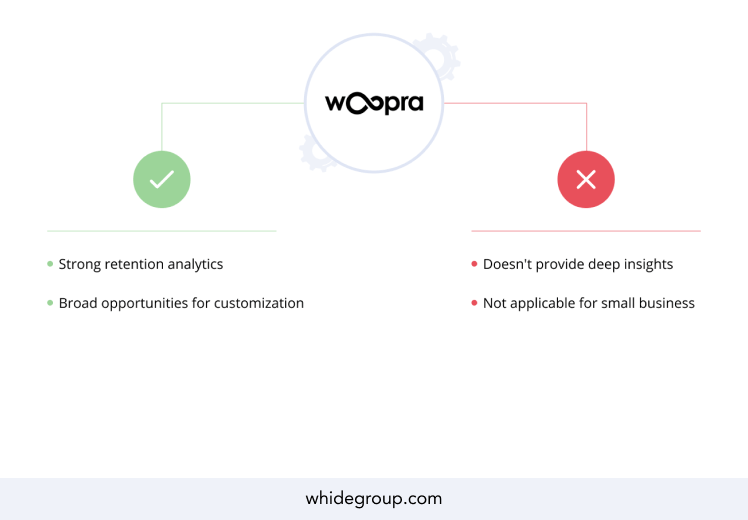
Highlights:
One of the top e-commerce analytics tools when it comes to customer experience enhancement, Webtrends is the best analytics for e-commerce if your priorities are custom and calculated metrics tracking, convenient data export, and reporting analytics customization. Webtrends is also good at providing insights about your customer’s activities – which pages and content they’re navigating, and how they interact, among others.
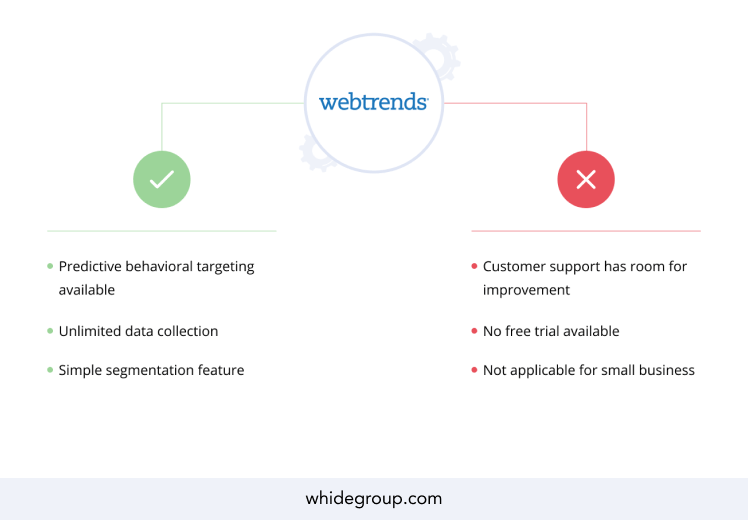
Highlights:
In our mind, one of the best analytics tools for e-commerce when it comes to product and user analytics for web and mobile, is Mixpanel. It’s also good enough to give a clear impression on each separate customer’s journey by optimizing actionable user analytics in how you acquire, engage, and retain customers. In this way, you get comprehensive data on each stage of the buyer’s journey.
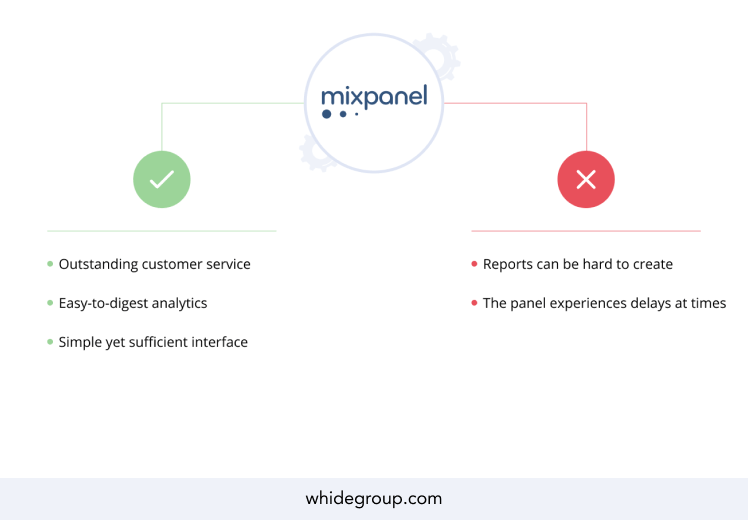
Highlights:
In addition to separate analytics tools for e-commerce, there are also analytics solutions that are provided within e-commerce platforms. Below we consider the analytics solutions of the most popular e-commerce platforms to date – Magento, Shopify and BigCommerce.
The Magento e-commerce platform provides its own business analytics tool, called Magento Business Intelligence. The product is available in two options: Magento BI Essential for basic needs and Magento BI Pro for enterprise e-commerce. Both options include 75 kinds of predefined reports, Magento and Google Analytics data source integration, SQL reports builder, and many other features essential to run an e-commerce business successfully.
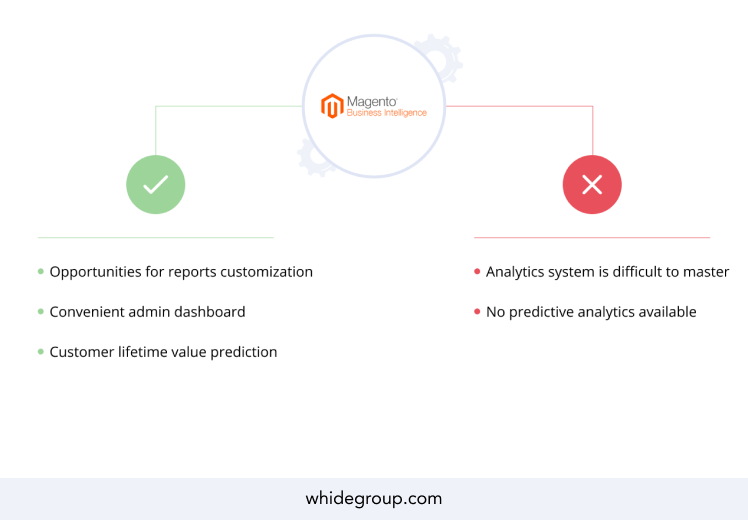
Highlights:
As for the Shopify analytics tool – this SaaS platform provides its customers with an opportunity to get insights from an in-built analytics and reports option. Depending on the plan you select to run your store, you get access to the creation of various types of default reports. Additionally, Shopify website analytics enables you to tailor reports to show the data that you want, filter the data in the reports, and export your reports for analysis in spreadsheet programs.
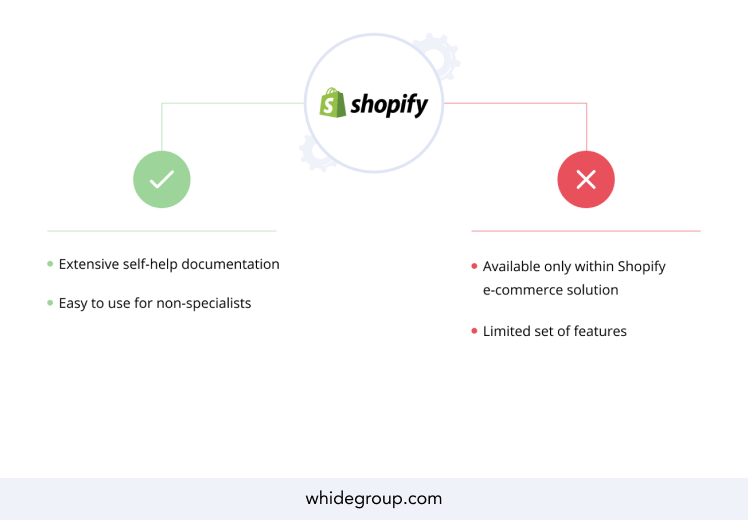
Highlights:
Like the previously mentioned e-commerce platforms, BigCommerce also provides in-built online store analytics. It is represented as a set of tools for reporting visitor metrics, identifying order trends, shaping merchandising strategies, and helping maximize the efficacy of your marketing campaigns. All these can provide a comprehensive, end-to-end view of a complete picture of customer engagement and revenue across all the channels from one place.
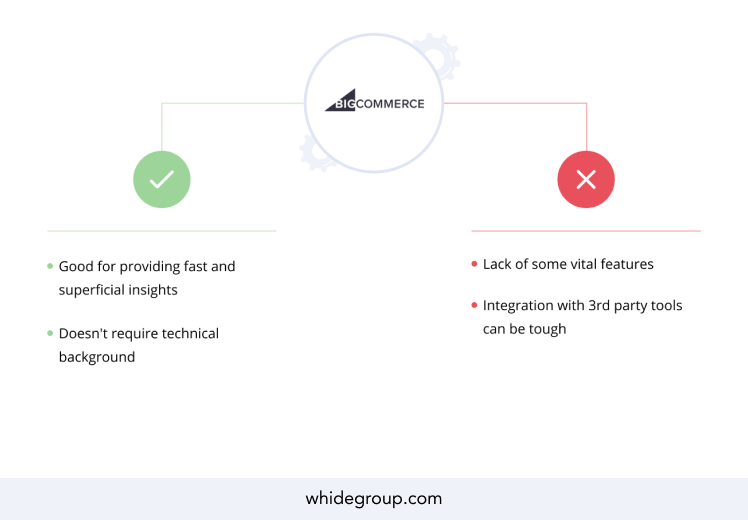
Highlights:
In case you haven’t found an appropriate analytics tools for e-commerce among those mentioned above, you can consider the option to develop your own from scratch! Here are the features that a good analytics tool should posses:
As a whole, it should be noted that there is no dramatic difference between analytic tools as all of them provide the business owner with approximately the same data and reports. In choosing between the top e-commerce analytics tools for your website, you’ll want to consider pricing strategy, technical support models, and the special features of the particular tools.
Having a variety of tools can arm you with easy-to-understand reports that illustrate your store’s successes and weaknesses, thereby showing you what fixes can be made. Just choose the tools exclusively for your business needs and take your website to the next level!
Share This Article

 Magento 2 Migration Guide: How to Migrate Magento 1 to Magento 2 Fast and Q...
Magento 2 Migration Guide: How to Migrate Magento 1 to Magento 2 Fast and Q...
Like!! I blog frequently and I really thank you for your content. The article has truly peaked my interest.
Thanks for this post,
Every tool has its own features, it’s always best to combine two or more tools to achieve the best marketing analytics for your e-Commerce store.